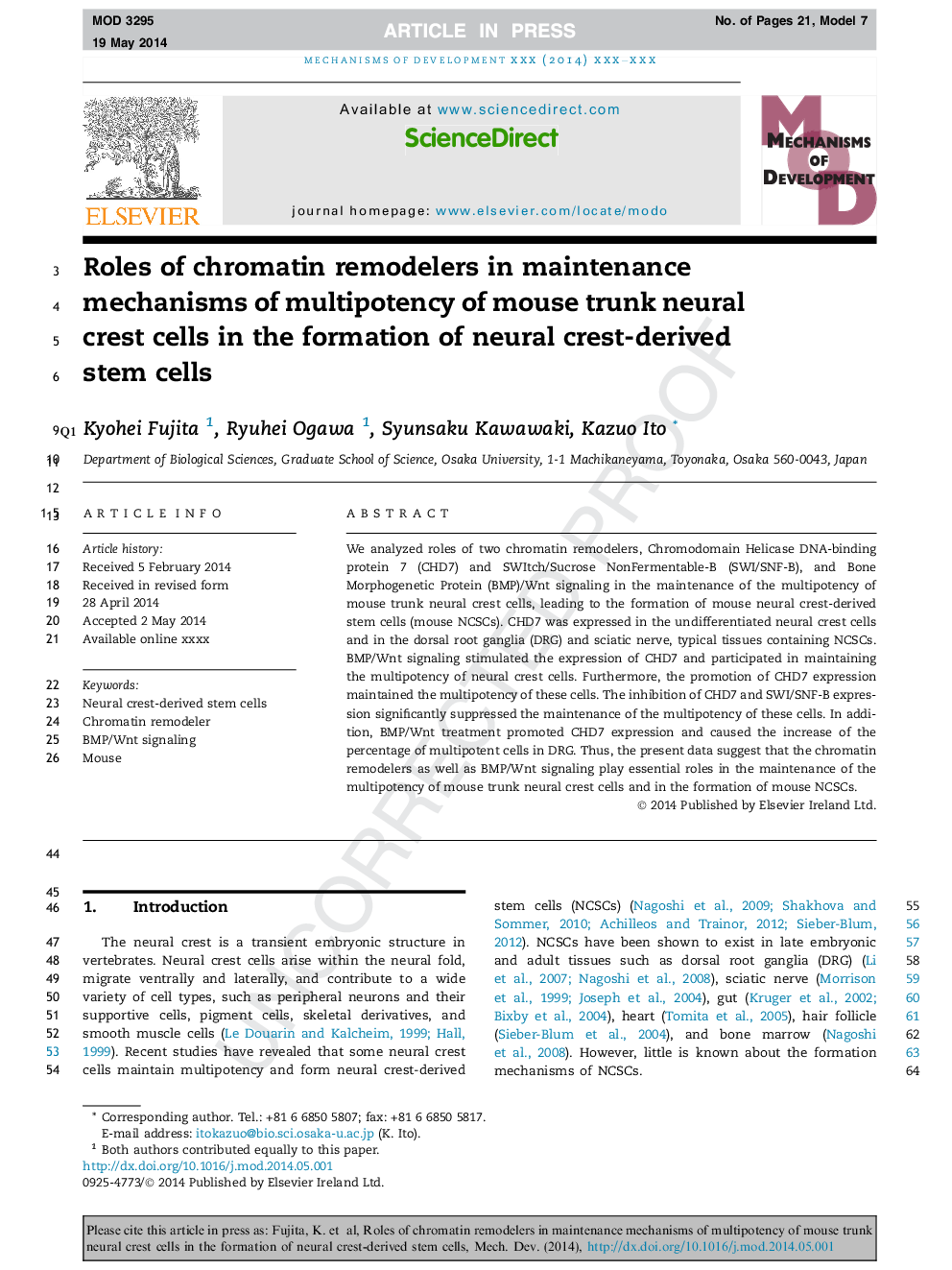| Article ID | Journal | Published Year | Pages | File Type |
|---|---|---|---|---|
| 8476068 | Mechanisms of Development | 2014 | 21 Pages |
Abstract
We analyzed roles of two chromatin remodelers, Chromodomain Helicase DNA-binding protein 7 (CHD7) and SWItch/Sucrose NonFermentable-B (SWI/SNF-B), and Bone Morphogenetic Protein (BMP)/Wnt signaling in the maintenance of the multipotency of mouse trunk neural crest cells, leading to the formation of mouse neural crest-derived stem cells (mouse NCSCs). CHD7 was expressed in the undifferentiated neural crest cells and in the dorsal root ganglia (DRG) and sciatic nerve, typical tissues containing NCSCs. BMP/Wnt signaling stimulated the expression of CHD7 and participated in maintaining the multipotency of neural crest cells. Furthermore, the promotion of CHD7 expression maintained the multipotency of these cells. The inhibition of CHD7 and SWI/SNF-B expression significantly suppressed the maintenance of the multipotency of these cells. In addition, BMP/Wnt treatment promoted CHD7 expression and caused the increase of the percentage of multipotent cells in DRG. Thus, the present data suggest that the chromatin remodelers as well as BMP/Wnt signaling play essential roles in the maintenance of the multipotency of mouse trunk neural crest cells and in the formation of mouse NCSCs.
Keywords
Related Topics
Life Sciences
Biochemistry, Genetics and Molecular Biology
Cell Biology
Authors
Kyohei Fujita, Ryuhei Ogawa, Syunsaku Kawawaki, Kazuo Ito,
